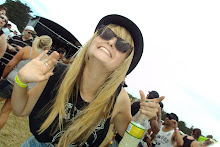The Shadow Studio project that I propose is primarily about the relationship between sensation and imprint through sleeping patterns and the exploration into if they can be induced or replicated.
The key words involved in my proposed research into the Shadow Studio are Sensation, Imprint, Psychology and Behaviour.
These words stem from my explorations into different materials and sleeping patterns.
The idea of sleep and its behavioural patterns concerned me with its links to subconscious feeling.
Subconscious feeling was initially discussed as a question of dress, “Do you have to be clothed to feel dressed?”, and with regards to sleep the example of the sensation of falling whilst in a dream state.
I plan to research sleep behavioural patterns by looking closer into sleep psychology and possibly even my own sleeping patterns on a scientific level. This will include studying text on the subject as well as approaching professional institutions like sleep apnoea clinics.
There have also been some sleep myths that have arisen during my research so far and I plan to do a MythBusters inspired experiment with regards to my own thoughts and feelings.
This theme of sleep was also encountered during the discovery of imprints from clothing I slept in leaving marks and indentation that also created small intricate shadows.
The documentation of such Sleep Tattoos will be the bulk of my initial exploration into mark making on the skin in a subconscious state.
To further this exploration I plan to discover how different materials affect the skin, the permanency of such markings and possibly the affects on different skin types.
These experiments will be achieved by designating a different material to sleep in for each night of a week, which may also include unconventional types of clothing to sleep in such as occasional wear, ie. Formal wear and Swim wear.
Bed design is another experiment that may also heighten the outcomes by covering a larger surface area with selected materials and then documenting the varied effects on the skin as opposed to just clothing.
There are also research questions I plan to answer through these experiments, which include;
“Can subconscious feelings or sensations be replicated or reproduced?”
“Can skin imprints, or Skin Tattoos, give the illusion of clothing?”
“Can brain functions, or behaviours, be induced rather than a random occurrence?”
The possible outcomes from these experiments and research could range from an imprinting device designed especially to replicate clothing on the skin to a garment that physically maps the Sleep Tattoos that I have documented. These outcomes will depend on the success of my experiments and the logicality of whether to take the discoveries more literal or leave them in an exploratory realm.
Fashion and art are never mutually exclusive and so the discovery of artists doing similar sleep themed works may help me to understand others thoughts on the subject and also their creative output.
Imogen Cunningham is a photographer that documented The Unmade Bed in 1957. Her view is an angle I have already explored in photographing my bed linens after discovering Sleep Tattoos on my body and where they may have come from. Looking into this series and the meaning behind it may also open up some insights into how others perceive the ritual of sleep and express it creatively.
Timeline – Research Plan
Week 8:
Wear different materials and clothes to bed and document the outcomes
Look into texts on sleep psychology and note important findings and quotes.
Week 9:
Start the Bed Design phase of experimentation and document findings and compare to previous clothing experiments.
Contact sleep apnoea clinic and other specialists to discover common sleeping disorders and patterns and how they can affect behaviours.
Week 10:
Host a sleepover with friends, which includes the wearing of certain materials to discover the effects on a variety of skin types.
Document through photography, film and a possible survey relating to the quality of sleep.
Week 11:
Compile all experiment outcomes and compare similarities or differences to determine if a final outcome will be literal or otherwise.
(Example; if imprints are common in certain areas of the body a garment may be designed to enhance those intricate lines...)
Week 12:
Develop a design language based on all previous research.
This includes key shapes, detailing and materials.
Put this into a prototype form and document how the body reacts to the outcome.
Week 13:
Refine outcome…
More prototypes leading to a final.
Week 14:
Further refine or complete outcome.
Document all processes.
Week 15:
Use final outcome to determine other purposes or functions and the relation to the original concepts.
(Discover the success of my experiment and research)
Compile and finish folio.
Complie a professional printed outcome to be used during assessment.
Week 16:
Continue with assessment materials and outcomes.
Week 17:
Assessment!
Monday, April 26, 2010
Tuesday, April 20, 2010
Sleep Tattoos



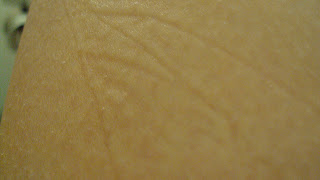

In thinking about "putting on" clothes and more broadly materials...
it got me into thinking about do you need to be wearing clothes to "feel" clothed?....sounds like an obvious answer but i would like to explore the phenomena of "feeling" in relation to being dressed or not...
then...
As I was in the shower after jumping out of bed, I found markings on my body from where I had slept tangled up in my sheets. My friends and I call these "Sleep Tattoos" and I have had quite a few in my time and decided that these imprints could relate to either a feeling or not...
This also got me to think about the imprints that the wearing of clothing can leave on our bodies. The photos of elastic imprinted into my feet are from ballet shoes.
I intend to document any significant "Sleep Tattoos" that I get in the next few weeks and the sheet formation in which i leave my bed or even "Clothes Tattoos" for comparison and "feeling".
PlayDoh Playing
In this video I asked Kyle to play with the PlayDoh with no desired outcome...
I found it interesting that he chose to mould it around his face without any direction from me....
The video also demonstrates the technique used that both informs and moulds the material as well as imprinting in it.
Monday, April 19, 2010
Play......Doh!







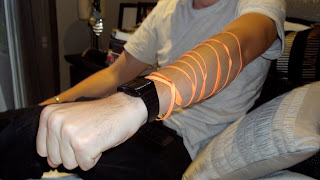
By applying similar moulding methods to the PlayDoh as I did to the Blu-Tack i was able to cover a much larger area and found that it had a little more stick to the skin and was more softly malleable.
The PlayDoh was also interesting in creating small dents and crevices made from my fingers when forming the shapes, this made small shadows in various depths and directions.
Using these moldable materials was challenging in creating something that could be "put on" but each gave shadow in various forms due to the varied techniques used.
A further exploration of what makes and constitutes shadow would be beneficial in understanding more about how materials react differently and how we react to them....
Blu-Tack and PlayDoh Exploration



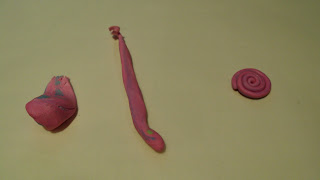



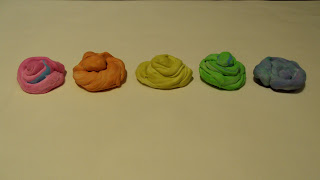
With the discovery of the various techniques I can use to manipulate the material of Blu-Tack, I decided I would like to apply this on a larger scale using the similar PlayDoh.....
These images also open up the tangent to explore the shadows that the Blu-Tack and the PalyDoh make as they are not a thin surface. These shadows could be enlarged and projected in order to form something else or even look like a shadow of another object.....
Material Play




Workshop Two Cont.
These images are of my exploration and manipluation of 4 different materials; candle wax, toothpicks, blu-tack and hair gel, in relation to making a model of my grey jumper and then "putting them on".
In order to "put on" most of the materials, the form or shape created was altered in order to get the feeling of what a full garment made out of that material would feel like against the body.
The toothpicks and candle wax were the most unwearable as a garment material and it relied on minimal movement and even glue to keep to my skin's surface.
The blu-tack and hair gel both felt cold against the skin and only adhered for a short while, so whilst slighlty uncomfortable these materials can be successfully "put on".
I was quite taken with the blu-tack material and the various ways in which it can be manipulated to created different forms and textures.....
A material for further exploration...
Workshop Two

Clothes,
Dress,
and
Materials
This photo is of our class attempting some of Erwin Wurm's "Plastic Process" ideas of how to reinterpret and wear clothes differently.
This exercise posed the question that; if worn differently, are clothes still what they were?
It is the ritualistic "putting on" of clothes that gives garments their conventional look, but what else can be "put on" and if this process is taken from another angle does the original function of the garment cease to exist?
In some cases I think yes, with jumpers and t-shirts immobilising the wearer and becoming a sort of living clothed sculpture....
This exercise could lead to potential research in the form of me "playing dress ups" to discover other ways to wear my usual clothes and what happens to them and me if i apply Wurm's "plastic process". To some extent I already do this by wearing certain things back to front for a different neckline but this is also open to further exploration.
Friday, April 9, 2010
Workshop One

Holly is clearly loving life!
The clothes swap exercise was an interesting way to feel differently but still in clothing.
I found Holly's clothes to be really comfortable but felt a little naked as we didn't trade leggings.
I think Holly felt a little uneasy in mine which was weird because she looked so good even though it showed off those sexy curves (go Holly!)
The main point I took away from the exercise is that it was quite strange watching someone in your exact clothes and their behavior in relation to comfort level etc.
Monday, April 5, 2010
Reading: Yuniya Kawamura "Fashion-ology"

Phew!
This one made sense the first time around....
The sociology of fashion is something that I have stumbled across but never really delved into but now is more than likely a great time to start...
A more modern study of the fashion system, Kawamura quickly seperates fashion from clothing.
Fashion is such a broad term and can encompass any cultural activity or appearance that becomes popularised and therefore "fashionable" to participate in.
Clothing is a different ball game with it's key purpose of modesty forgotten in place of the styles and themes of the now, for clothing to become fashion.
"Fashion is of it's time" - Chanel
Kawamura's writing has inspired me to think about what fashion truly is....
Established as not only clothing, fashion is more a state of mind that can be subconsciously formed or knowingly sort out in order to become fashionable.
The idea of fashion is just that, an idea, but how manipulated can this ideal become before it is deemed not fashion at all?
I think popularity plays a big part in fashion, after all if an idea is not adopted by many how can it be fashionable?
But if this is true, then fashion is not new or from the now at all.......is fashion a facade?
pondering....
Reading: Roland Barthes "The Fashion System"

I found reading the opening chapter a little tricky in that there seemed to be a little lost in translation, but once I got into the swing of the writing it became easier to understand what Barthes was on about.
I quite like Barthes' thinking about the three garments; written, image-clothing and real clothing.
It revealed, for me as a fashion student, that I deal with these three types of garments almost on a daily basis but have never realised that they are seperate entities and that if interchanged with one another can have quite an interesting effect on how to view fashion.
Barthes' exploration of language was particularly interesting when he points out that it is the order and choice of language which establishes a garment by drawing up and image in your mind more so than an image which seems stagnant and lifeless. This thought will help me to appreciate fashion photography when it does evoke emotion and tell the story of a garment, when it's really good!
Subscribe to:
Comments (Atom)

